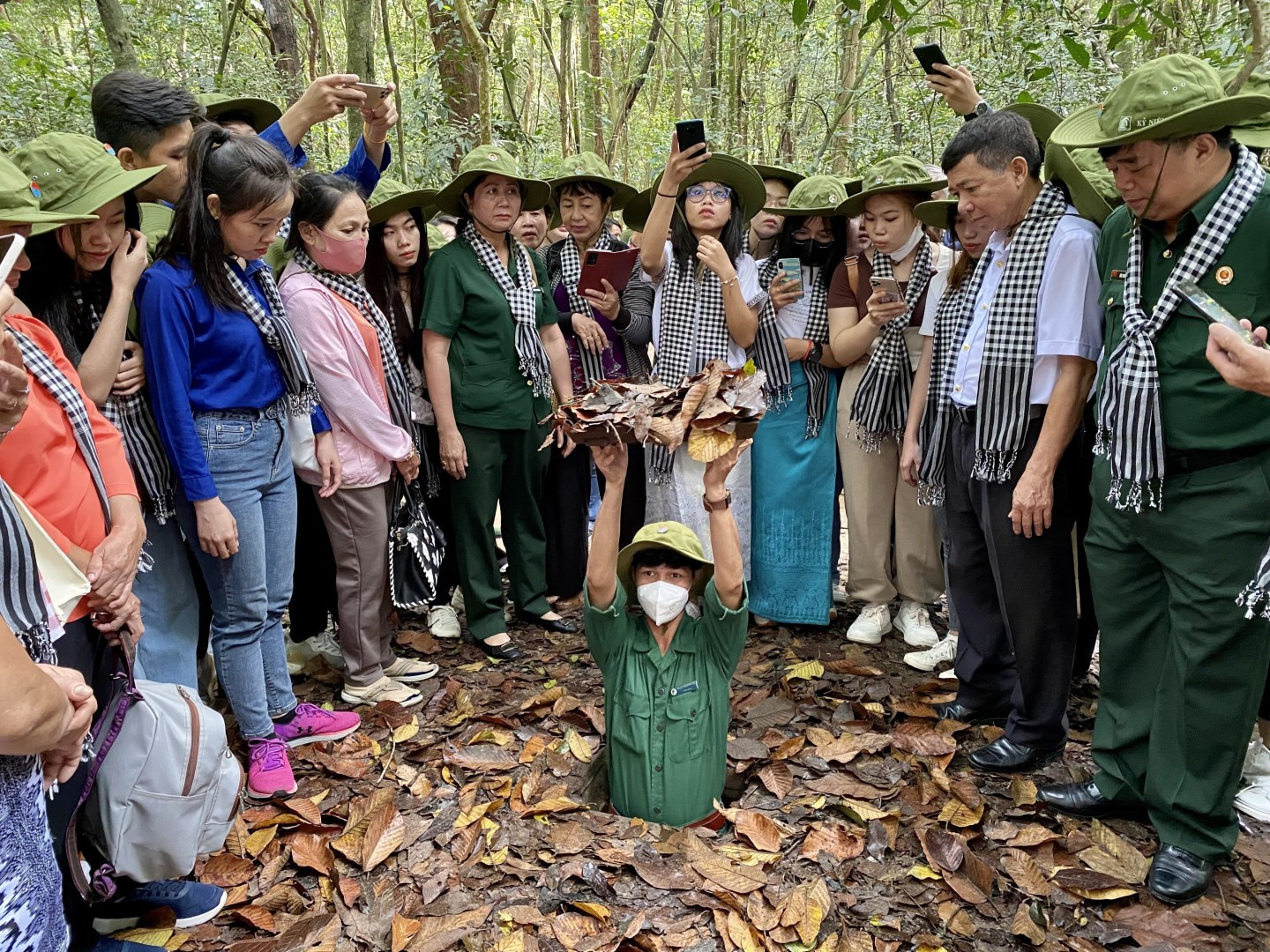
The southern region is a place marked by heroic victories that contributed to the Great Victory on April 30, 1975, leading to the reunification of the country. Today, as the region develops alongside the entire nation in a new era, the historical and cultural sites related to the just struggle are preserved by all levels of government, sectors, and citizens to maintain their value for today and the future.

Visitors to Ho Chi Minh City War Remnants Museum (Photos: VNA)
Ho Chi Minh City – the centre of the southern region – has nearly 190 ranked historical and cultural relic sites, many of which are closely linked to the resistance war against US imperialists.
According to the municipal Department of Tourism, in recent times, the city’s tourism offerings have developed immensely, with many increasingly unique tours and products, among which, visits to historical and cultural heritage sites are indispensable. One of the most impressive and popular tours that has drawn large numbers of visitors is the “Biet dong Sai Gon” (Saigon Special Forces) tour, taking tourists to experience a wide range of exciting activities at historical sites.
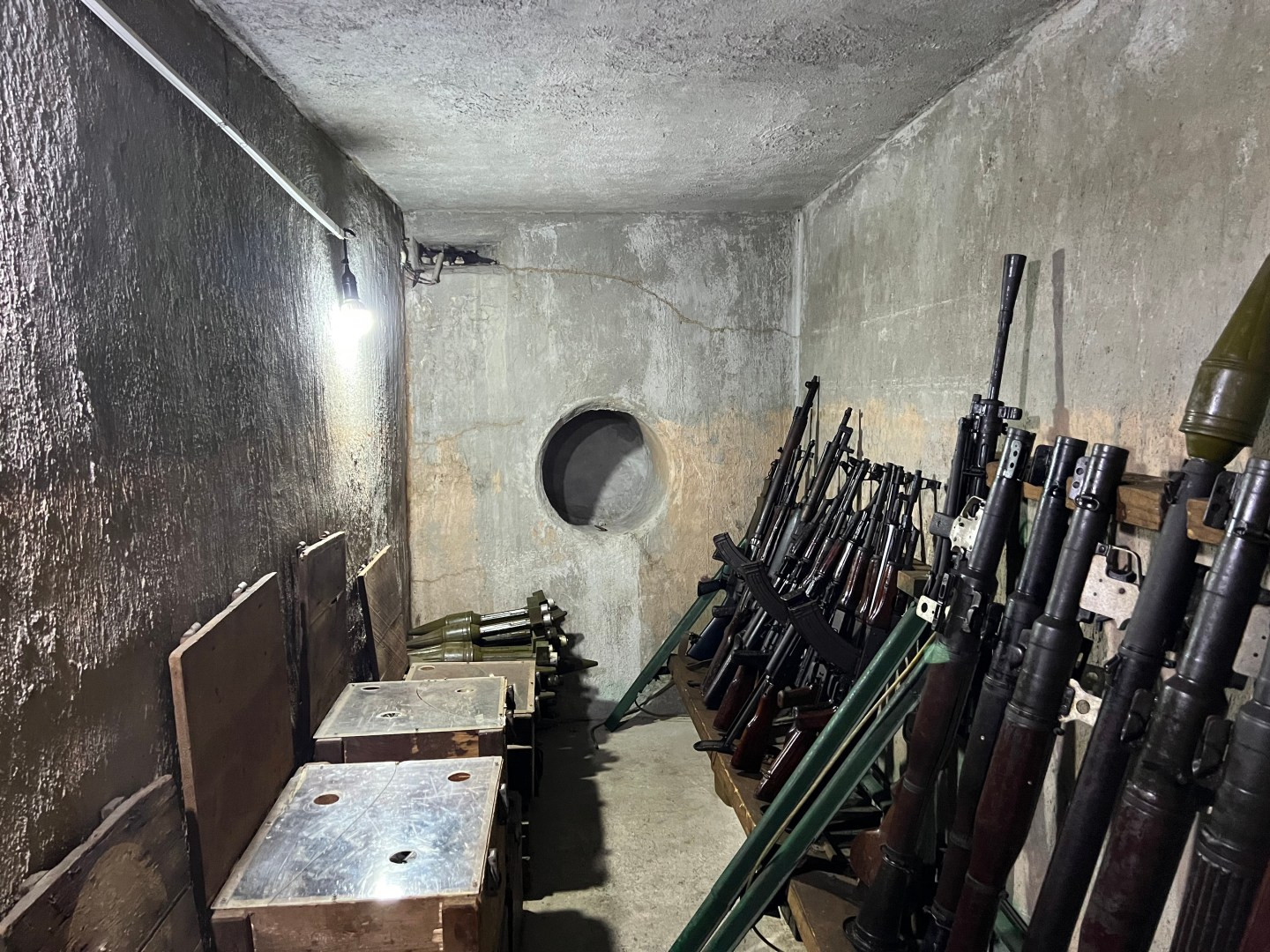
On this journey, tourists have an opportunity to visit a series of significant landmarks, including a secret mailbox and floating bunkers used by the Saigon Special Forces, the Saigon Special Forces Museum, a bunker storing weapons used to attack the Independence Palace in 1968, and a memorial for the Saigon Special Forces soldiers who sacrificed their lives during the 1968 Spring General Offensive and Uprising. Through these experiences, visitors can gain a profound understanding of a particularly significant period in Vietnam’s history, the heroic feats, and the sacrifices of the Saigon Special Forces in the struggle for national reunification.
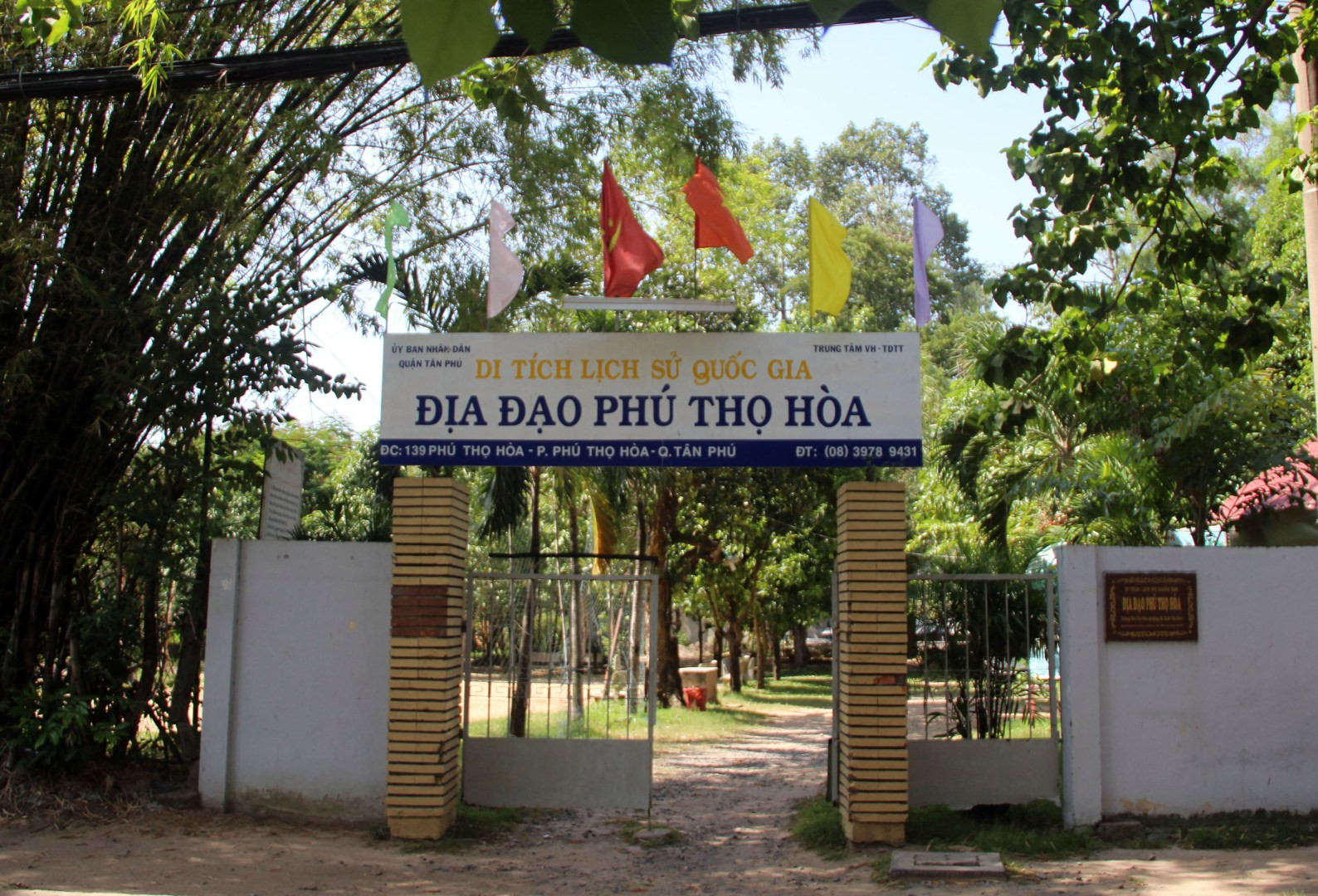
The Phu Tho Hoa resistance tunnels mark periods of fierce fighting of the troops and people of Saigon-Gia Dinh during the resistance wars against France and the US. (Photo: VNA)
Nguyen Ngoc Trinh, from Penguin Travel Services Joint Stock Company, which operates tours related to historical and cultural monuments, shared that recently, tours to Cu Chi Tunnels and Phu Tho Hoa Tunnels have attracted a large number of visitors.
Enhancing connectivity, promoting creativity
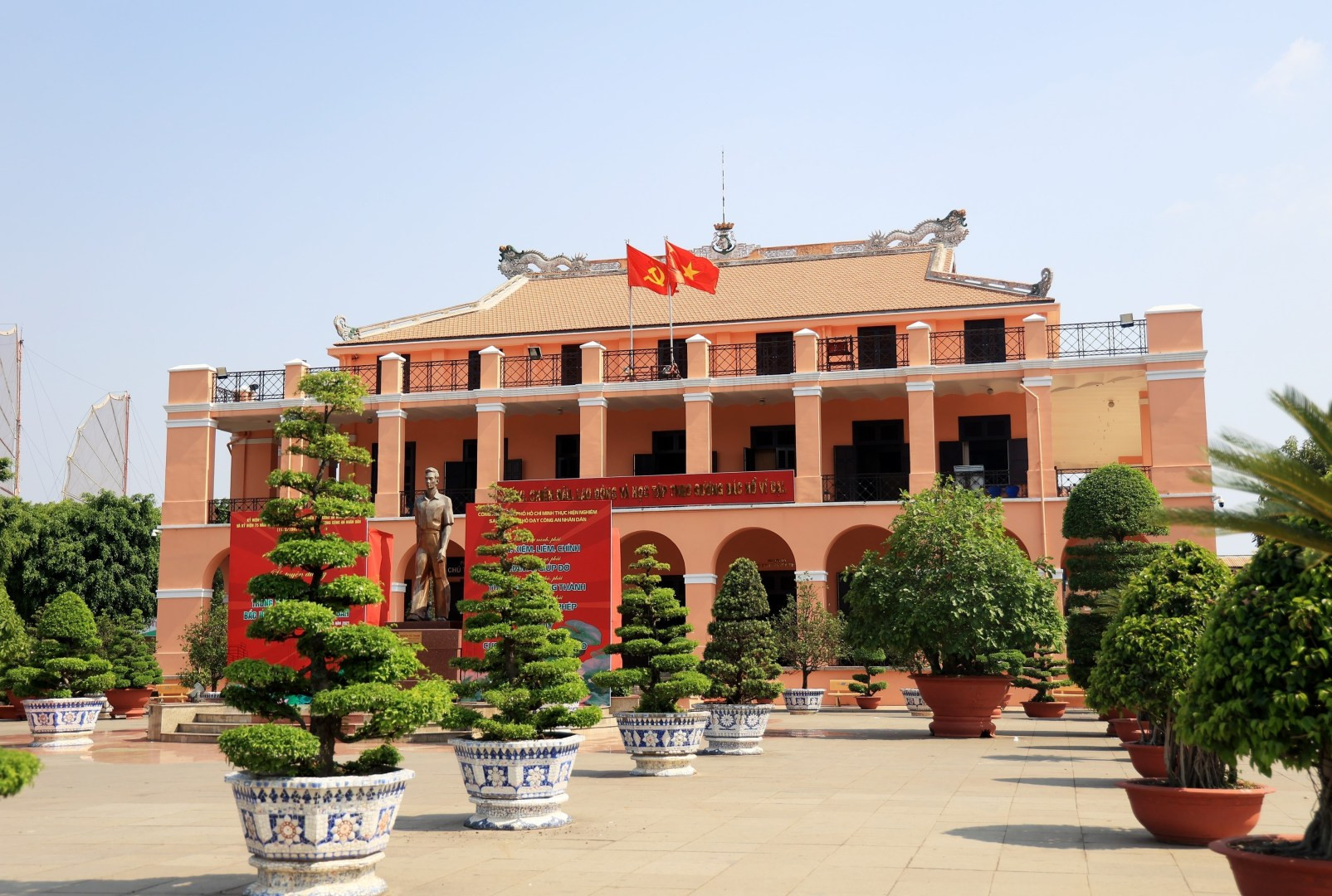
From left to right: Nha Rong Wharf (now the Ho Chi Minh Museum branch in Ho Chi Minh City); Independence Palace – a “witness” to history; Inside the Saigon-Gia Dinh Special Force Museum at No. 145 Tran Quang Khai street, Tan Dinh ward, District 1, Ho Chi Minh City. (Photos: VNA)
Regarding the effective operation of tourism activities at historical and cultural sites, many experts agree that Vietnam has paid considerable attention to promoting revolutionary historical sites, attracting tourists. On one hand, this broadens the tourism product offerings, meeting the diverse and growing demands of visitors. On the other hand, it also helps promote the value of these sites, contributing to enhancing cultural and historical education, and fostering a deeper understanding of the nation’s traditions.
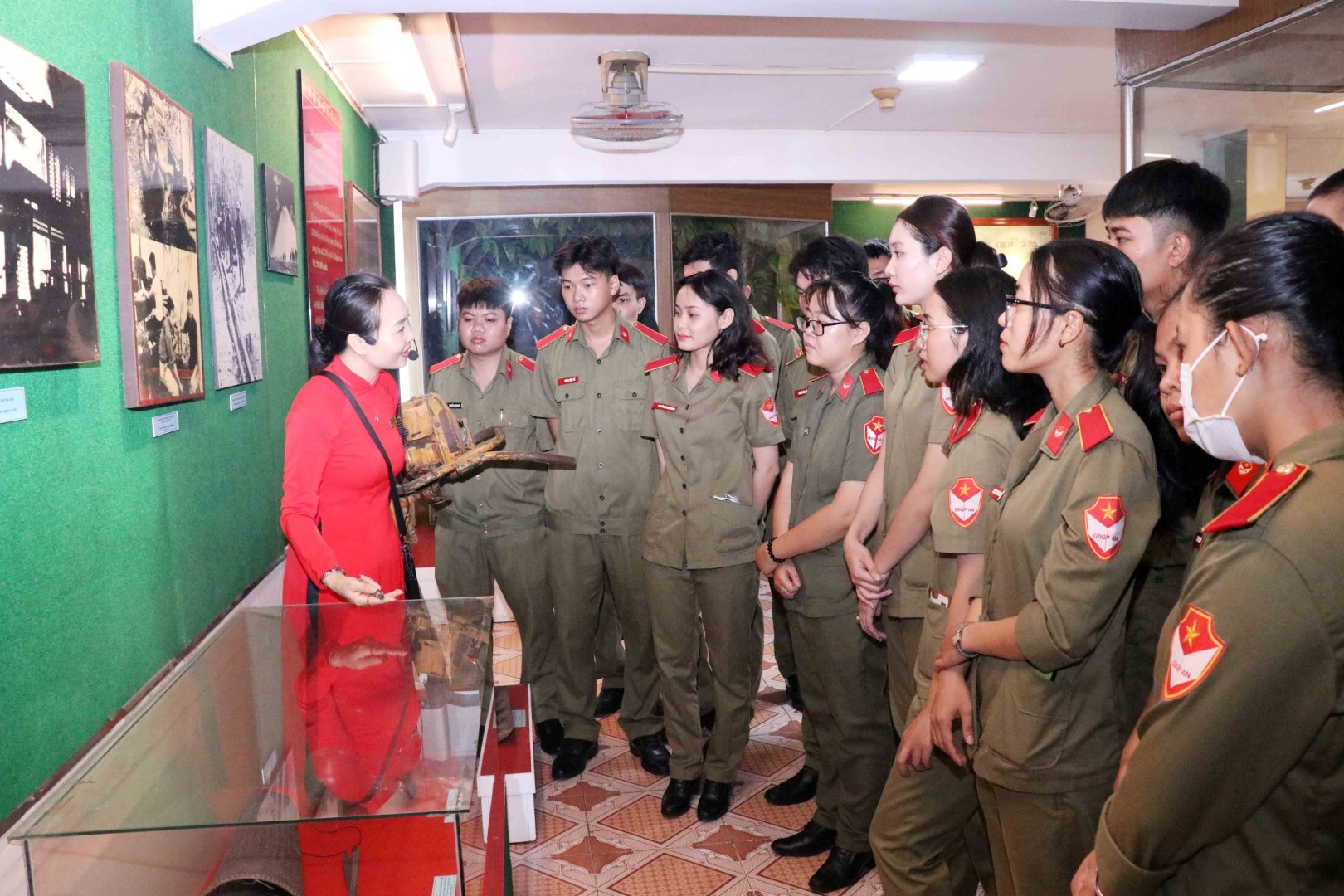
It is also crucial to create engaging experiences for tourists. There should be well-designed connections that “guide” visitors to multiple meaningful attractions within a single journey.
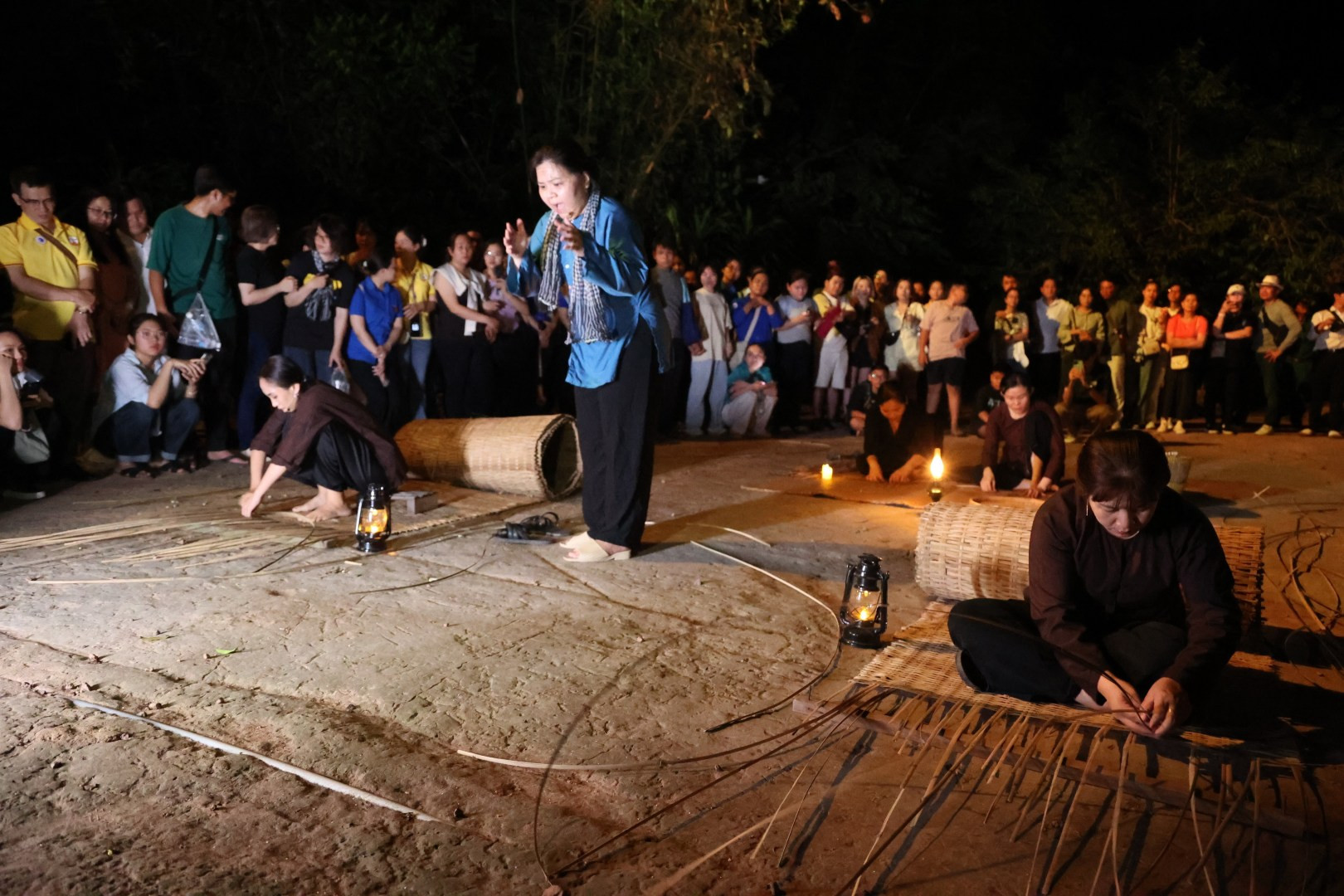
Dang Thu Hien from Hanoi’s Dong Da district shared that when she visited Cu Chi Tunnels, a special national cultural and historical relic site earlier this year, she was pleasantly surprised, as in addition to exploring the underground tunnels, she had an opportunity to enjoy the “Moonlight in the Military Base” programme, which recreated the life and activities of the Cu Chi people from 1961 to 1964.
This included activities such as local people digging tunnels and weaving baskets under the moonlight, young people grinding and pounding rice and singing folk songs in the fields and at the markets, and performances by art troupes serving soldiers and guerrillas.
This kind of immersive experience helps visitors not only learn about the historical importance of these sites but also feel connected to the lives of the people who lived and fought there, enriching their understanding of history and culture. Hien expressed her hope that other historical and cultural sites will continue to offer more creative products and attractive reality programmes to attract both domestic and international tourists.

According to Nguyen Van Dung, Vice Chairman of the Ho Chi Minh City People’s Committee, 2025 holds significant importance for the city and the country as a whole, marking numerous major anniversaries and preparing for a new era for the nation.
As such, the tourism sector, which is a key driver of the city’s economy, needs to undergo even more innovation and creativity. Historical and cultural sites will continue to play an important role in affirming the city’s position as one of the most vibrant tourist destinations in the country.
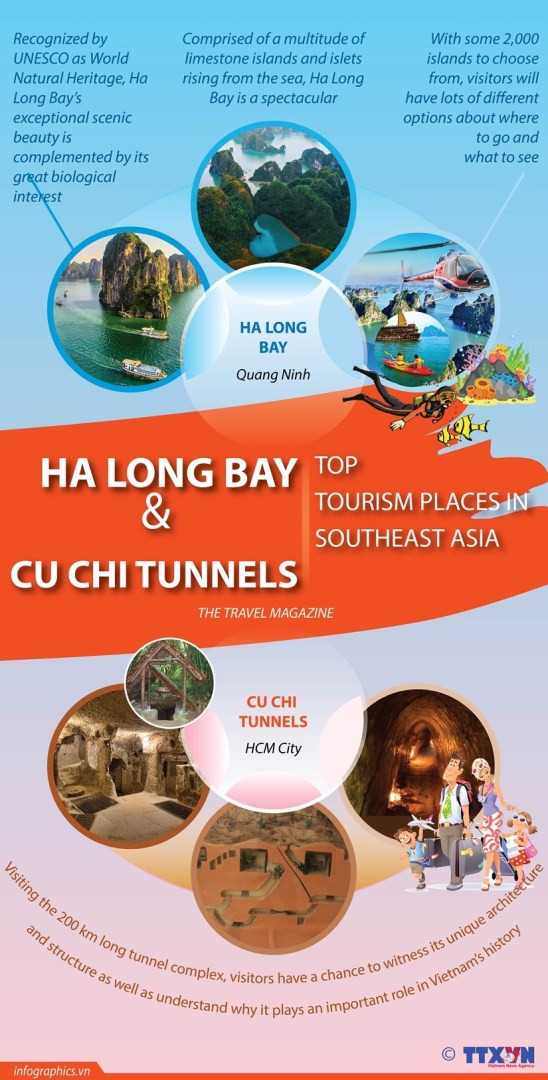
Ha Long Bay and Cu Chi Tunnels enter Top Tourism Places in Southeast Asia in March 2023 (Photo: VNA)
The city is focusing on improving the quality and diversifying its tourism products, aiming to bring into full play its unique strengths. A development plan for cultural and historical tourism products is being devised, conveying a message of “peace” and “happiness” in mind. HCM City set an ambitious goal of attracting 8.5 million foreign visitors and 45 million domestic holiday-makers in 2025, solidifying its tourism brand on the international stage, said Dung./. VNA